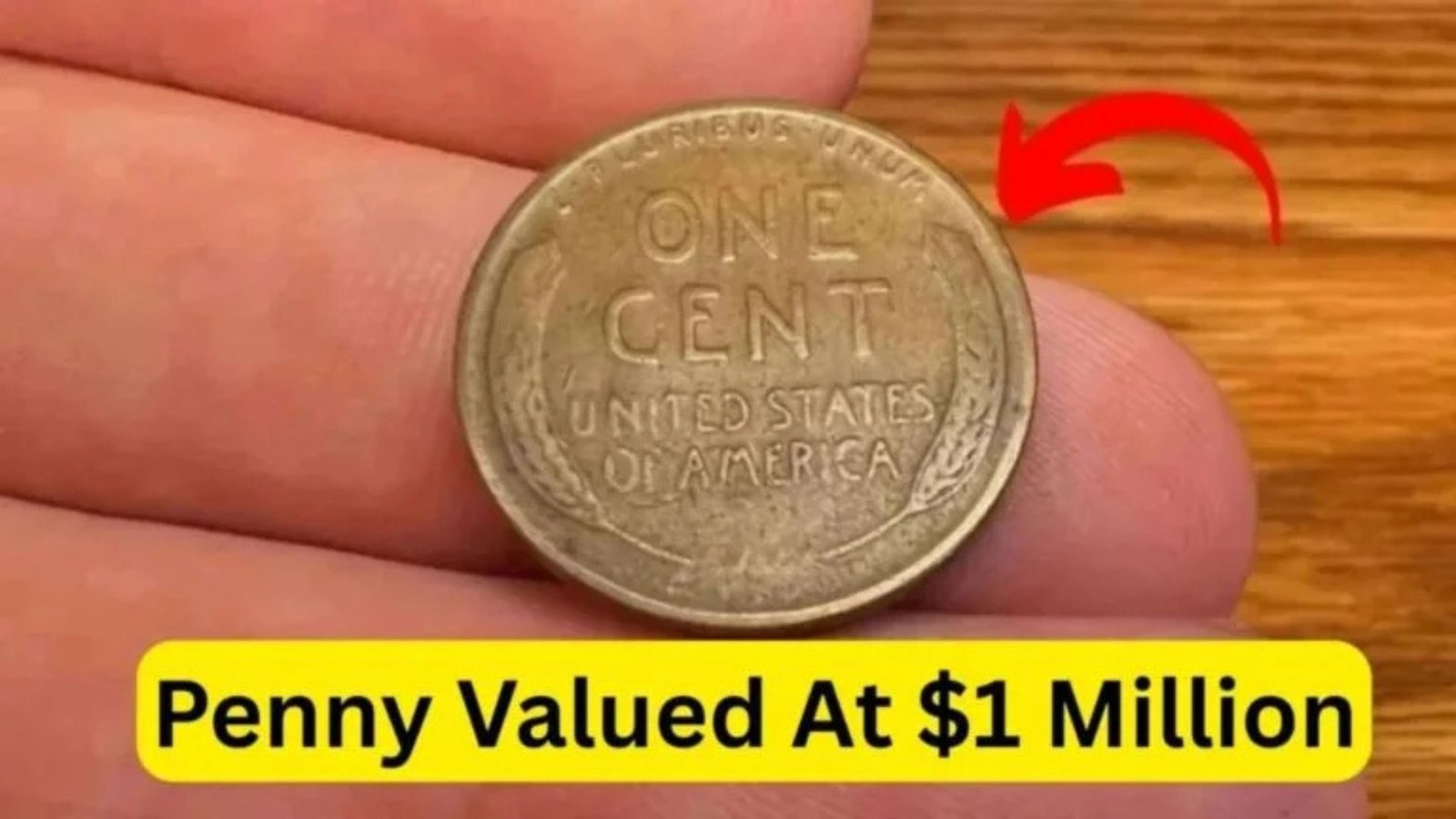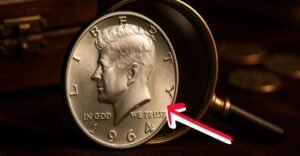Imagine digging through an old jar of loose change and stumbling upon a tiny copper coin worth more than a luxury car. Sounds like a dream? It’s not—it’s the real story of the ultra-rare Lincoln Wheat Penny, a everyday-looking U.S. penny from the early 1900s that could secretly be hiding a $1 million fortune in your home.
Coin collectors go wild for these gems, and everyday folks have turned pocket change into life-changing cash. In this guide, we’ll uncover the history, spot the fakes from the fortunes, and show you exactly how to check your own stash. If you’ve got a dusty coin collection or a forgotten piggy bank, this could be your ticket to riches. Ready to hunt for treasure? Let’s dive in.
What Exactly Is a Lincoln Wheat Penny? A Quick History Lesson
The Lincoln Wheat Penny isn’t just any coin—it’s an American icon minted from 1909 to 1958. Created to honor President Abraham Lincoln on the 100th anniversary of his birth, these pennies feature his profile on the front and two wheat stalks on the back (hence the “wheat” nickname). Back then, they were made mostly of copper to celebrate a simpler time in U.S. history.
Why do they matter today? During World War II, copper was scarce because it was needed for bullets and wires. So, in 1943, the U.S. Mint switched to steel for pennies to save resources. Billions of these shiny steel coins flooded pockets across America. But here’s the twist: A handful of copper versions slipped through the cracks due to a minting mix-up. Those accidental copper pennies? They’re the holy grail for collectors, fetching eye-popping prices at auctions.
Fun fact: The very first Lincoln Wheat Penny in 1909 had a special “VDB” mark on the back, standing for designer Victor David Brenner. Some versions with that mark are rare too, but nothing beats the 1943 copper anomaly. These coins tell a story of wartime hustle and human error turning trash into treasure. If you’re holding one without knowing, you might be richer than you think—stay tuned to learn how to spot it.
The Legendary 1943 Copper Lincoln Wheat Penny: Why It’s Worth a Fortune
Picture this: It’s 1943, factories are churning out war supplies, and pennies are stamped from steel to keep the metal flowing to the front lines. But at the San Francisco Mint, a few hundred-dollar bills worth of copper planchets (the blank metal discs used for coins) got left in a hopper by mistake. The presses rolled on, accidentally creating about 20 to 40 copper Lincoln Wheat Pennies instead of steel ones.
These “error coins” were pulled from circulation fast, but a few escaped into the wild. Fast-forward to today: Only around 20 are known to exist in top condition. In 2010, one sold for $1.7 million at auction—yes, you read that right. Another fetched $1.38 million in 2021. Why the hype? Rarity meets history. Owning one is like holding a piece of WWII-era serendipity.
But don’t stop at 1943. Other Lincoln Wheat Pennies pack a punch too, like the 1909-S VDB (only 484,000 made) or the 1914-D (super low mintage). Collectors grade them on a scale from 1 to 70—higher scores mean bigger bucks. A beat-up 1943 copper might still go for $100,000, while a pristine one? Dream big.
Spotting the Real Deal: Key Features of the Million-Dollar Penny
Not every reddish penny is a winner—fakes abound, so arm yourself with knowledge. Here’s what makes the genuine 1943 copper Lincoln Wheat Penny stand out:
- Color and Weight: Real ones are copper-brown and weigh about 3.11 grams (steel fakes are lighter at 2.7 grams and silvery-gray).
- Date and Mint Mark: Look for “1943” under the date. Mint marks (S for San Francisco, D for Denver) appear below. No mark? It’s Philadelphia—rarer still.
- Edge Check: Copper shows a smooth, uniform edge; steel often has reeding (tiny grooves) from plating attempts.
- Magnet Test: Steel pennies stick to a magnet—copper doesn’t.
If your coin passes these, snap high-res photos and consult a pro. Excitement builds fast, but verification is key to cashing in.
Other Hidden Gems: Top Valuable Lincoln Wheat Pennies You Need to Know
The 1943 copper steals the spotlight, but the Lincoln Wheat Penny series is full of surprises. From doubled dies (printing errors making letters look ghostly) to overdates (one year stamped over another), these quirks boost value big time. We’ve crunched the numbers from recent auctions to bring you the must-know rarities.
Here’s a handy table breaking down some top contenders, their key traits, and average sale prices in good condition (based on 2023-2025 auction data from sites like Heritage Auctions and PCGS):
| Variety | Key Feature | Mintage (Approx.) | Average Value (Good Condition) | Record Auction Price |
|---|---|---|---|---|
| 1909-S VDB | Tiny “VDB” initials on back | 484,000 | $700 – $1,500 | $168,000 (2018) |
| 1914-D | Low mintage from Denver | 1,193,000 | $150 – $500 | $159,000 (2022) |
| 1922 Plain (No D) | Missing “D” mint mark due to wear | Unknown (error) | $500 – $2,000 | $18,000 (2024) |
| 1943 Bronze | Accidental copper during steel year | 20-40 known | $100,000+ | $1.7M (2010) |
| 1955 Doubled Die | Obvious doubling on date and words | Unknown (error) | $1,000 – $3,000 | $124,000 (2008) |
| 1944 Steel | Steel in a copper year (opposite error) | 30 known | $50,000+ | $373,750 (2008) |
This table shows variety is the spice of coin hunting—don’t overlook the underdogs. Values fluctuate with market trends, but demand for Lincoln Wheat Pennies is hotter than ever, thanks to online forums and TV shows like Pawn Stars.
Pro Tip: Why Condition Is King in Coin Values
Ever heard “circulated” vs. “uncirculated”? It’s coin lingo for wear and tear. A shiny, untouched penny scores high on the Sheldon Scale (that 1-70 grading system). Polish it? Big no-no—that drops value by ruining the original surface. Store yours in soft cloth albums, away from sunlight and humidity, to keep it mint-fresh.
Step-by-Step: How to Hunt for a Valuable Lincoln Wheat Penny in Your Home
Think your grandma’s coin jar is just junk? Think again. Millions of rare Lincoln Wheat Pennies sit unrecognized in attics and drawers. Follow these easy steps to start your treasure hunt—no fancy tools needed.
- Gather Your Stash: Empty jars, albums, and piggy banks. Focus on pre-1959 pennies (wheat design ended in 1958).
- Sort by Date: Line ’em up oldest first. Anything 1909-1920 or 1943? Priority check.
- Magnify and Inspect: Use a 10x loupe (cheap on Amazon) to scan for errors like doubled letters or off-center strikes.
- Weigh and Test: Kitchen scale for weight; fridge magnet for steel vs. copper.
- Research Online: Plug details into CoinTrackers or PCGS CoinFacts for quick value estimates.
- Get Expert Eyes: Take suspects to a local coin shop or submit to grading services like NGC or PCGS (fees start at $20).
Real story time: In 2023, a Virginia man found a 1943 copper in his dad’s WWII savings—sold for $200,000, buying his family a home. Your turn could be next. Patience pays; rushing leads to missed millions.
Turning Your Find into Cash: Selling a Rare Lincoln Wheat Penny
Found a keeper? Congrats—now monetize wisely. Skip eBay for big-ticket items; fakes swarm there. Instead:
- Grade It First: Pros at PCGS or NGC slab it in a tamper-proof holder with a grade—boosts trust and price by 20-50%.
- Auction Powerhouses: Heritage or Stack’s Bowers host live events where collectors bid wildly. Expect 10-15% fees, but top dollar.
- Private Sales: Network via coin clubs (find local ones on ANA.org). Safer for newbies, but haggle hard.
- Taxes Alert: Uncle Sam wants a cut—report sales over $600 on Schedule D. Consult a tax pro.
Avoid “quick cash” dealers—they lowball. A $1 million coin deserves the red-carpet treatment. And remember: Holding onto it? Values climb 5-10% yearly for top rarities.
Why Lincoln Wheat Pennies Still Captivate Collectors Today
Beyond the bucks, these coins connect us to history—Lincoln’s legacy, wartime grit, minting magic. In a digital world, tangible treasures like a Lincoln Wheat Penny feel priceless. Whether you’re a newbie flipper or seasoned stacker, the thrill of the hunt beats any app.
So, what are you waiting for? Raid that change drawer today. Who knows—you might just unearth the $1 million Lincoln Wheat Penny that’s been winking at you all along. Share your finds in the comments; happy hunting!




